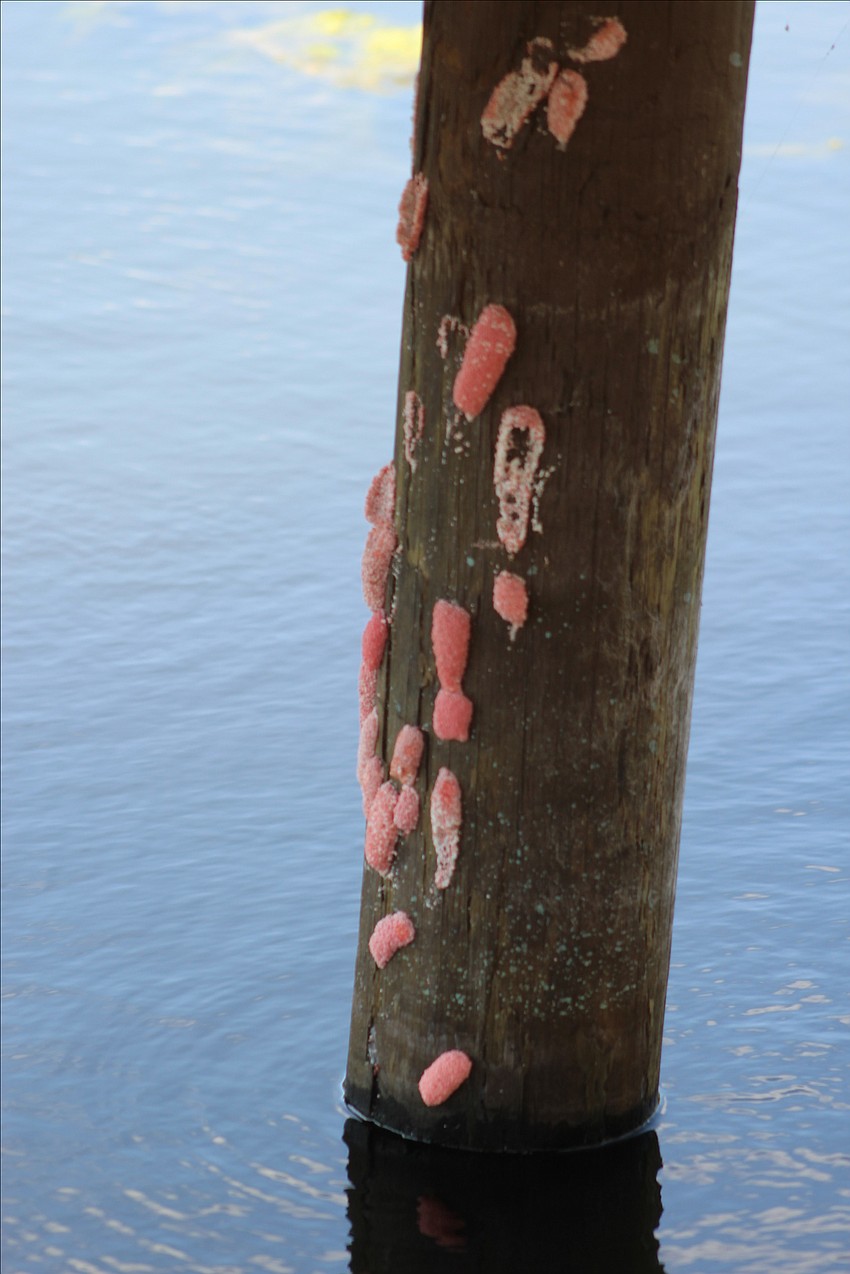- May 16, 2025
-
-
Loading

Loading

While overdevelopment would seem to be the biggest threat to Manatee County wetlands, could something smaller than a baseball pose even a larger threat?
Richard Meyers walks around the pond near his Braden Woods home regularly, but rarely along the water’s edge.
Last week, he was drawn to walk a little closer. As he neared the water, Meyers saw empty snail shells the size of baseballs scattered along the shore. When he looked up, he saw thousands of pink eggs clinging to the dock's pilings.
A Google search led him to an invasive apple snail species, so he called the Florida Fish and Wildlife Conservation Commission to report the sighting.
When Alyssa Vinson, a master gardener and certified arborist at the Manatee County Agricultural and Extension Services, saw Meyers’ photos, she confirmed the snails were of the invasive variety.
“At this point, we have apple snails in most freshwater bodies throughout our area,” she said.

The eggs are a clear identifier. The Florida apple snail is one of several species of Pomacea apple snails found in Florida, but eggs from the native species are white.
The threat of these exotic snails is in their voracious appetite for aquatic vegetation and the early and rapid reproduction rates of the females.
"Apple snails profoundly altered plant communities and nutrient cycling in the water," according to findings from a 2022 study from the University of Florida.
Nutrient cycling helps to keep the water in balance. There’s also no effective pesticide to control the apple snails and identification between exotic species is difficult.
The FWC reported that the shells look too similar to ensure accurate identification, and to make matters worse, the aquarium trade has bred them into a range of different colors and patterns.
“Currently, there is little FWC can do to stem the exotic apple snail populations, as is the case for most established exotic species that are often part of the exotic pet trade,” the report reads.
Meyers received confirmation that his report was received by the FWC, but there’s been no additional followup.
“If residents see the egg masses, they can knock the eggs down and crush them,” Vinson said.
Beyond that, there’s not much to stop the invasion. Native apple snails don’t reproduce until six months and only lay between 20-80 eggs per clutch. Exotic apple snails start reproducing between two to three months and the clutches can contain up to 2,000 eggs.